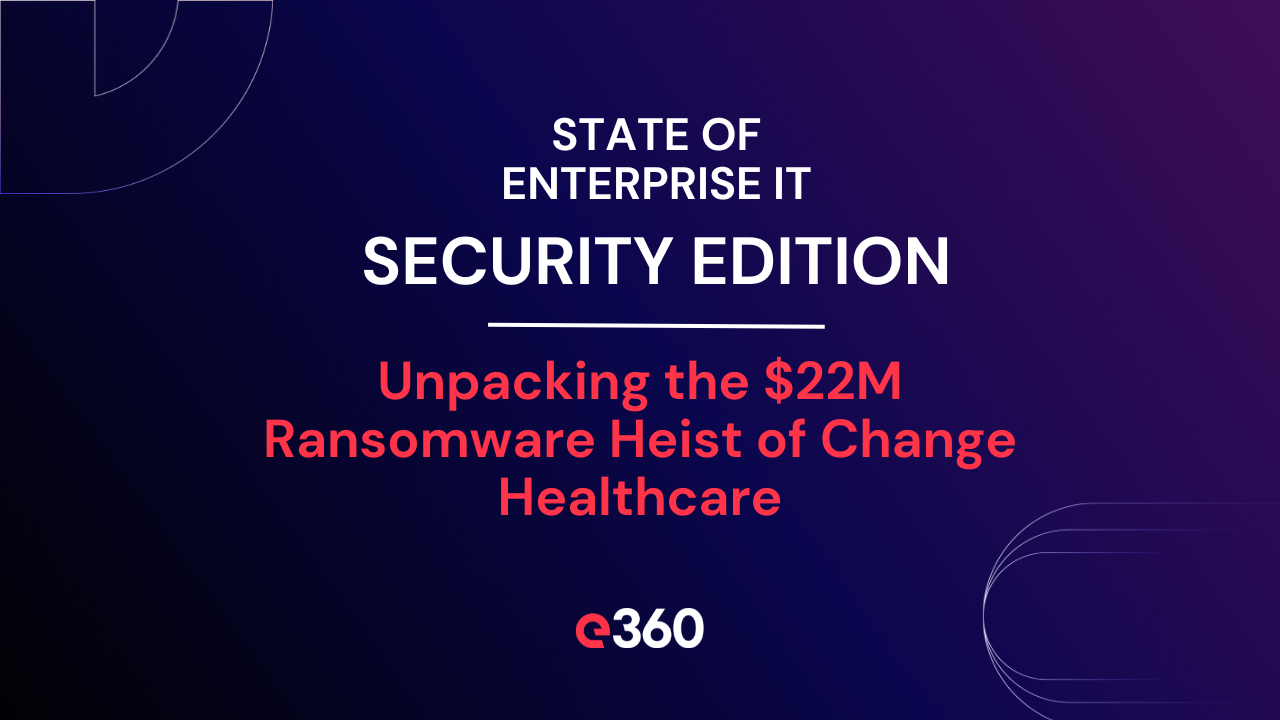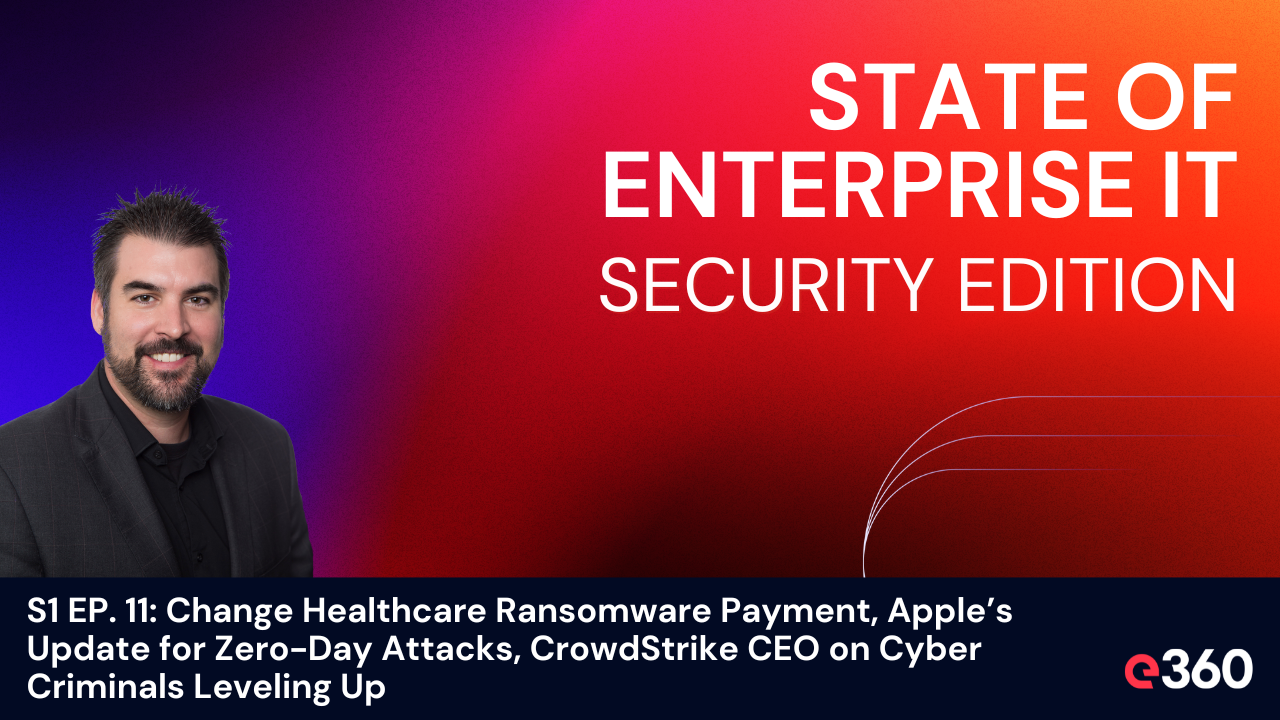Healthcare Under Siege: The Growing Ransomware Threat
Healthcare continues to be the most targeted industry for ransomware attacks, with profound consequences for patient care, operations, and financial stability. This article examines the unique vulnerabilities that make healthcare organizations prime targets, the evolving tactics of threat actors, and how forward-thinking institutions are building effective defenses.
The Current Threat Landscape
The healthcare sector faces an unprecedented level of cyber risk. According to IBM's 2023 Cost of a Data Breach Report, healthcare has maintained its position as the industry with the highest average breach cost for 13 consecutive years.
The 2024 HIMSS Healthcare Cybersecurity Survey confirms that phishing remains the most common method of cyberattack for significant security incidents, with healthcare organizations increasingly employing gamification, tabletop exercises, and interactive workshops to boost workforce security awareness.
Key Attack Statistics
| Metric | Current Status | Industry Trend |
|---|---|---|
| Cybersecurity budget increases | 55% of organizations | Upward |
| Organizations investing >7% of IT budget on security | 30% | Increasing |
| Organizations conducting tabletop exercises | 45% | Insufficient |
| Organizations rating security training as "very effective" | 18% | Needs improvement |
Source: 2024 HIMSS Healthcare Cybersecurity Survey
Why Healthcare Remains the Primary Target
Healthcare organizations face unique vulnerabilities that make them particularly attractive targets for ransomware operators. These vulnerabilities stem from healthcare's distinctive operational, technical, and human factors.
1. Life-Critical Operations
Unlike other industries where downtime primarily affects revenue, healthcare organizations face immediate life safety implications when systems are unavailable.
According to the American Hospital Association (AHA), the impact of cyberattacks goes beyond data breaches to become "threats to patient safety" that can necessitate diverting emergency patients, postponing procedures, and disrupting essential care services.
The High Stakes of Healthcare Ransomware
The 2024 HIMSS Healthcare Cybersecurity Survey confirms that the largest healthcare data breach in history – the February 2024 ransomware attack on Change Healthcare – prompted many healthcare organizations to reevaluate and strengthen their cybersecurity posture.
2. The Healthcare Technical Landscape
Healthcare's technology ecosystem presents unique security challenges:
Legacy Clinical Systems
The U.S. Department of Health and Human Services (HHS) Health Sector Cybersecurity Coordination Center (HC3) has identified legacy systems as a critical vulnerability in healthcare environments. Many essential clinical applications run on outdated operating systems that can no longer receive security updates.
Connected Medical Devices
The FDA's Cybersecurity Modernization Action Plan addresses the growing security concerns around connected medical devices in healthcare settings, establishing new requirements for manufacturers to implement and maintain appropriate cybersecurity protections.
Complex Network Environments
The National Institute of Standards and Technology (NIST) Cybersecurity Framework provides specific guidance for healthcare organizations to address the challenges of securing distributed clinical environments while maintaining necessary access for care delivery.
3. Human Factors in Healthcare Security
The clinical focus of healthcare creates unique security vulnerabilities:
Clinical Workflow Pressures
A study published in JAMA Network Open found that clinicians frequently circumvent security controls when they perceive them as barriers to patient care, creating significant security vulnerabilities even with robust technical safeguards in place.
Workforce Security Awareness
According to the 2024 HIMSS Healthcare Cybersecurity Survey, only 18% of healthcare organizations rate their security awareness training programs as "very effective," with the majority (62%) considering them only "somewhat effective."
The Evolution of Healthcare Ransomware
Ransomware tactics targeting healthcare have grown increasingly sophisticated:
1. From Opportunistic to Targeted
The HHS Office for Civil Rights (OCR) reports that modern healthcare cyberattacks show clear evidence of thorough reconnaissance and targeted tactics rather than opportunistic compromise, with threat actors specifically seeking out healthcare organizations with critical care operations.
2. Multi-Stage, Multi-Vector Attacks
The Cybersecurity and Infrastructure Security Agency (CISA) and the Health Information Sharing and Analysis Center (H-ISAC) have documented the increasing complexity of healthcare ransomware attacks, which typically involve multiple stages:
- Initial compromise (often via phishing)
- Credential harvesting
- Lateral movement
- Data exfiltration
- Encryption deployment
- Backup destruction
3. Supply Chain Vulnerabilities
The 2024 HIMSS Healthcare Cybersecurity Survey notes that the February 2024 attack on Change Healthcare demonstrated how compromising a single healthcare vendor can affect virtually every hospital in the United States, highlighting the critical importance of third-party risk management.
Building Healthcare-Specific Ransomware Defense
Effective healthcare ransomware defense requires a strategy that acknowledges the industry's unique challenges.
1. Resilient Clinical Workflows
Forward-thinking healthcare organizations are redesigning clinical workflows to maintain care delivery during system outages:
- Regular "downtime drills" practicing paper-based operations
- Tactical workstation deployment strategies with offline capabilities
- Clinical workflow automation that includes fallback modes
According to the American Hospital Association's cybersecurity resources, organizations should develop and regularly test comprehensive business continuity plans that address both technical recovery and clinical operations during extended outages.
2. Segmentation for Clinical Safety
Network segmentation is particularly critical in healthcare environments:
- Clinical networks isolated from administrative systems
- Medical device networks with specialized monitoring
- Tiered access controls based on clinical role
The HHS 405(d) Program's Health Industry Cybersecurity Practices (HICP) specifically recommends network segmentation as a foundation of healthcare cybersecurity, particularly for protecting critical clinical systems.
3. Healthcare-Specific Security Operations
Leading healthcare organizations have developed specialized security operations approaches:
Clinical Impact Monitoring
The 2024 HIMSS Healthcare Cybersecurity Survey emphasizes the importance of security tools customized to detect anomalies in clinical workflows, not just technical indicators of compromise.
Healthcare Threat Intelligence
The Health Information Sharing and Analysis Center (H-ISAC) provides healthcare-specific threat intelligence and best practices for responding to emerging cyber threats targeting the sector.
Tabletop Exercises With Clinical Scenarios
Despite their importance, the 2024 HIMSS Healthcare Cybersecurity Survey found that only 45% of healthcare organizations conduct tabletop exercises for incident response testing, with 39% not conducting such exercises at all.
The Role of Healthcare Leadership
The most successful healthcare cybersecurity programs emphasize leadership engagement:
Board-Level Metrics
According to the 2024 HIMSS Healthcare Cybersecurity Survey, organizations are increasingly aligning cybersecurity metrics with organizational objectives and patient safety considerations to gain executive and board support.
Clinician-Security Partnerships
The National Academy of Medicine's Action Collaborative on Cybersecurity in Healthcare has emphasized the importance of collaborative approaches that bring together clinical, IT, and security stakeholders to develop solutions that work in real-world care environments.
Investment Prioritization
The 2024 HIMSS Healthcare Cybersecurity Survey reports that 55% of healthcare organizations plan to increase cybersecurity spending in 2025, with 30% of respondents investing more than 7% of their IT budget on cybersecurity improvements.
Regulatory and Policy Considerations
Healthcare cybersecurity operates within an evolving regulatory framework:
- HIPAA Security Rule requirements for protection, detection, and recovery
- FDA guidance on medical device security
- State breach notification requirements
- HHS 405(d) Program voluntary cybersecurity practices
The Department of Health and Human Services recently released Healthcare Sector Cybersecurity Performance Goals (CPGs), which establish voluntary security practices specifically designed for healthcare organizations.
Case Study: Northeastern Health System's Security Transformation
After experiencing a significant ransomware incident in 2023, Northeastern Health System (a 650-bed academic medical center) implemented a comprehensive security transformation program:
Before:
- Traditional IT security approach
- Limited clinical involvement
- Technical metrics focus
- 16-day recovery from ransomware
After:
- Clinical security partnership model
- Security embedded in clinical workflows
- Patient safety impact metrics
- 72-hour recovery capability
Key Outcomes:
- 83% reduction in security incidents affecting clinical operations
- 95% clinician satisfaction with new security model
- Successful defense against two attempted ransomware attacks
- $3.2 million annual reduction in security incident costs
Action Plan: Building Healthcare Ransomware Resilience
Immediate Steps (0-90 Days)
- Conduct a clinical impact assessment of critical systems
- Implement healthcare-specific phishing training
- Review backup strategies for clinical systems
Medium-Term Actions (3-6 Months)
- Develop clinical security metrics for leadership reporting
- Implement network segmentation for critical clinical systems
- Conduct tabletop exercises with clinical stakeholders
Long-Term Strategy (6-18 Months)
- Redesign clinical workflows for resilience
- Implement zero trust architecture for clinical applications
- Develop healthcare-specific threat hunting capabilities
Conclusion: A Coordinated Defense
As ransomware threats continue to evolve, healthcare organizations must recognize that traditional IT security approaches are insufficient. Effective defense requires deep integration between security, clinical operations, and organizational leadership.
By building security strategies that acknowledge healthcare's unique challenges and prioritize patient safety, organizations can create resilient environments that protect both data and care delivery.
Additional Resources:
- HHS 405(d) Aligning Health Care Industry Security Approaches
- American Hospital Association Cybersecurity Resources
- HIMSS Healthcare Cybersecurity Resources
- Health Information Sharing and Analysis Center (H-ISAC)
Ready to assess your healthcare organization's ransomware resilience?
Schedule a complimentary assessment →



